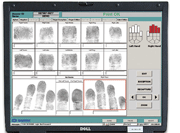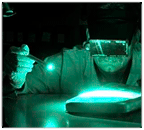AFIS reach new levels as biometrics advance at Moore’s Law pace
Florida county solves cold case with new Automated Fingerprint Identification System
22 February, 2017
category: Biometrics, Government
Old criminals beware. The chance that you will be identified from long-ago collected evidence is growing exponentially as biometric systems and Automated Fingerprint Identification Systems (AFIS) improve. Case in point, Pinellas County, Florida, where a man was arrested on Feb. 17, 2017 for a crime committed 25 years prior.
At the time of the 1992 sexual attack, the Tampa Bay Reporter explains that latent fingerprint evidence was collected from the scene. The prints were run through the AFIS used by the Sheriff’s Office at that time to no avail.
Fast forward to July 2016. A new AFIS from MorphoTrak had recently replaced the prior decades-old system used by the county. Latent print examiners once again processed the 25-year-old fingerprint evidence collected in the cold case. Thanks to the vastly improved matching algorithms and architecture, the new AFIS hit on a single suspect.
It is very likely that the same level of improvement seen in Pinellas County’s AFIS between 1992 and 2016 will again be seen between 2016 and 2020. That next factor of advancement could take just months post 2020. And the sky is the limit from there.
Several months later, the man was arrested, charged with sexual battery and taken to the jail.
In Pinellas County, the new AFIS system is returning more than 230 hits on latent print checks each month, an increase of more than 50% from the prior generation technology.
That is impressive, but is it a mere glimpse of things to come?
Biometric systems – for AFIS solutions, border control, identity management, authentication, mobile ID, digital identity, etc. – are advancing at a Moore’s Law style rate. Each incarnation breeds more significant advances than its predecessor, and the incarnations — or generations – are coming more and more rapidly.
We are in the midst of an unprecedented rise in the acceptance of biometrics. With acceptance comes investment. And this will result in massive and spiraling gains in all areas required for exponential growth: intellectual pursuit, financial investment, technical gains – chip, software, processing, cloud, et al, government and standards interest, and more.
It is very likely that the same level of improvement seen in Pinellas County’s AFIS between 1992 and 2016 will again be seen between 2016 and 2020. That next factor of advancement could take just months post 2020. And the sky is the limit from there.
New AFIS solutions hold the promise of far better identification and accuracy, streamlined human inputs and overall efficiencies, and ever-increasing processing power, storage and cross-system sharing.
One day (soon), criminals may be unable to hide.
If I had committed a past crime and left fingerprint evidence, I’d be preparing for relocation to somewhere without extradition as the opportunity to avoid identification will be slimming rapidly.




